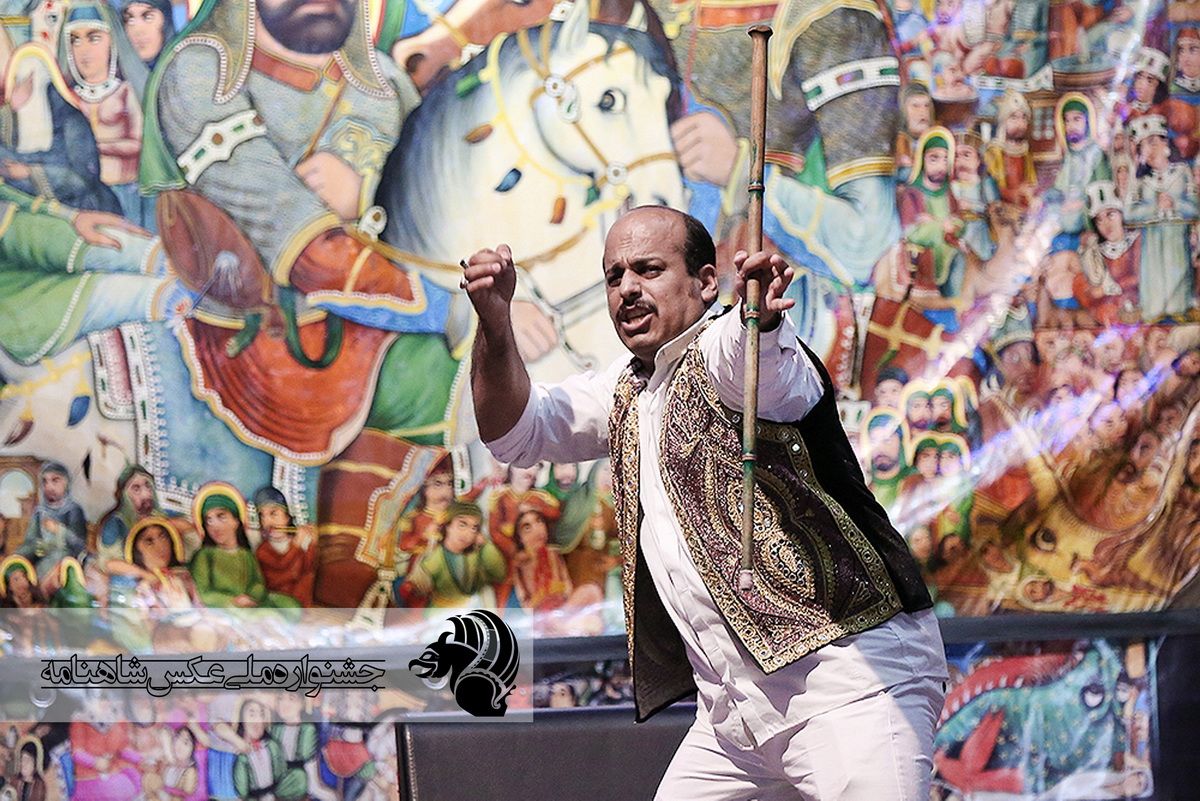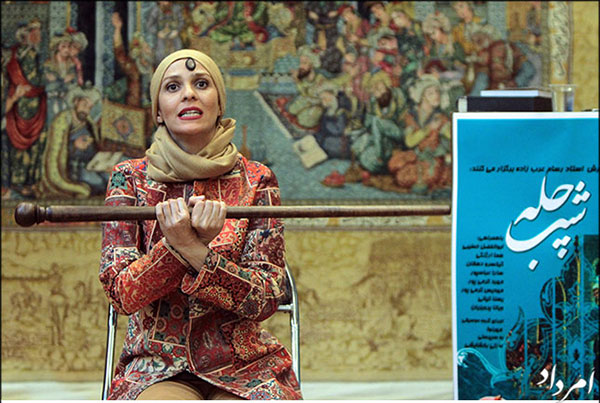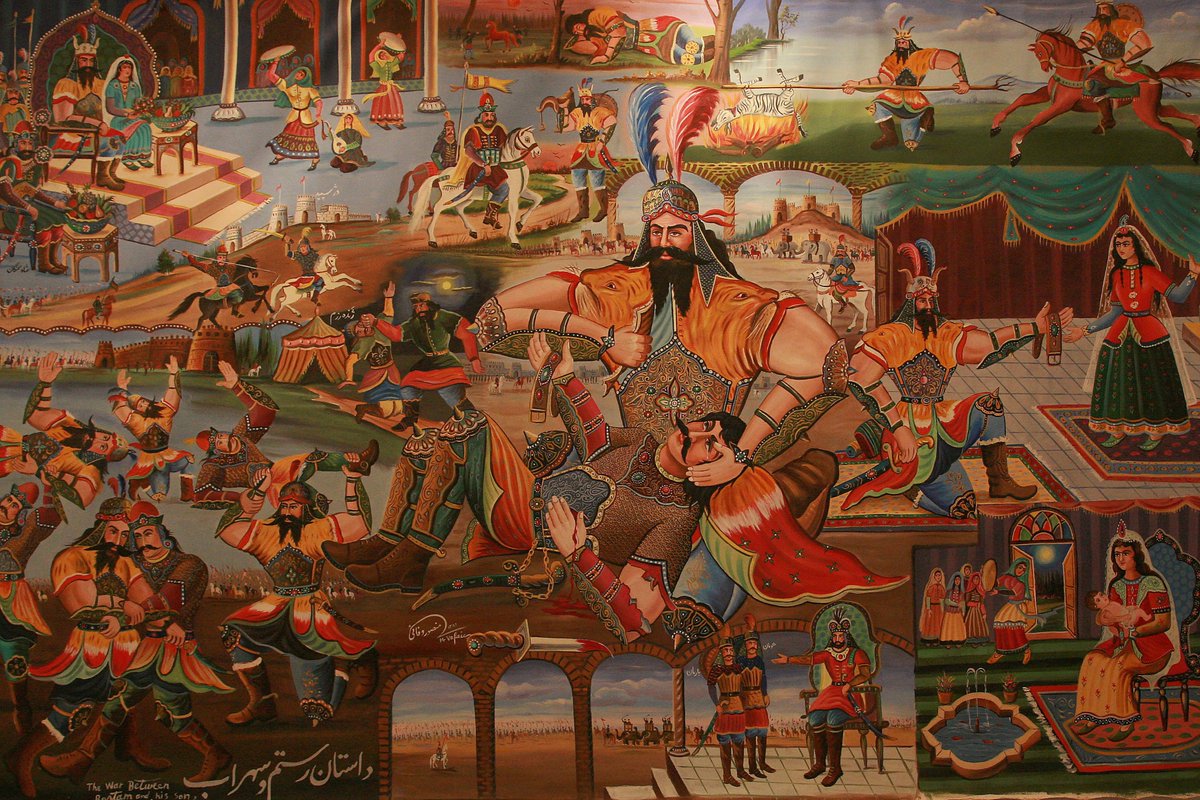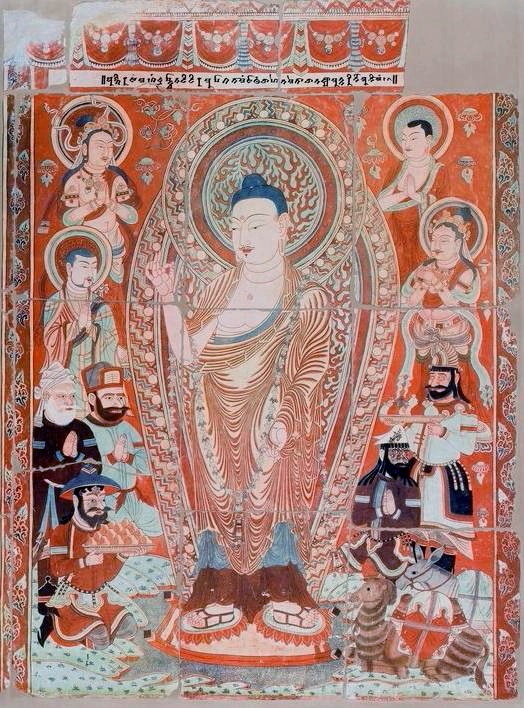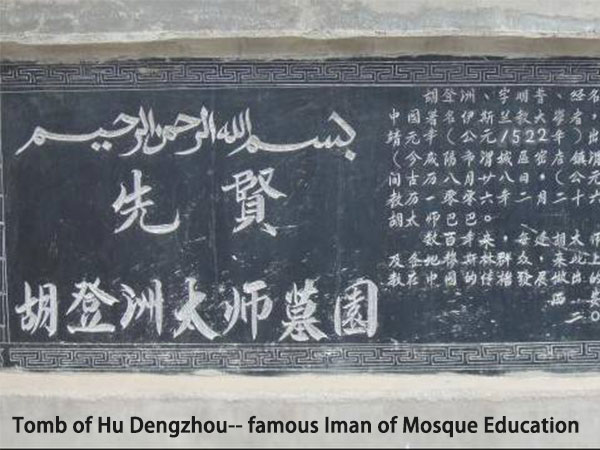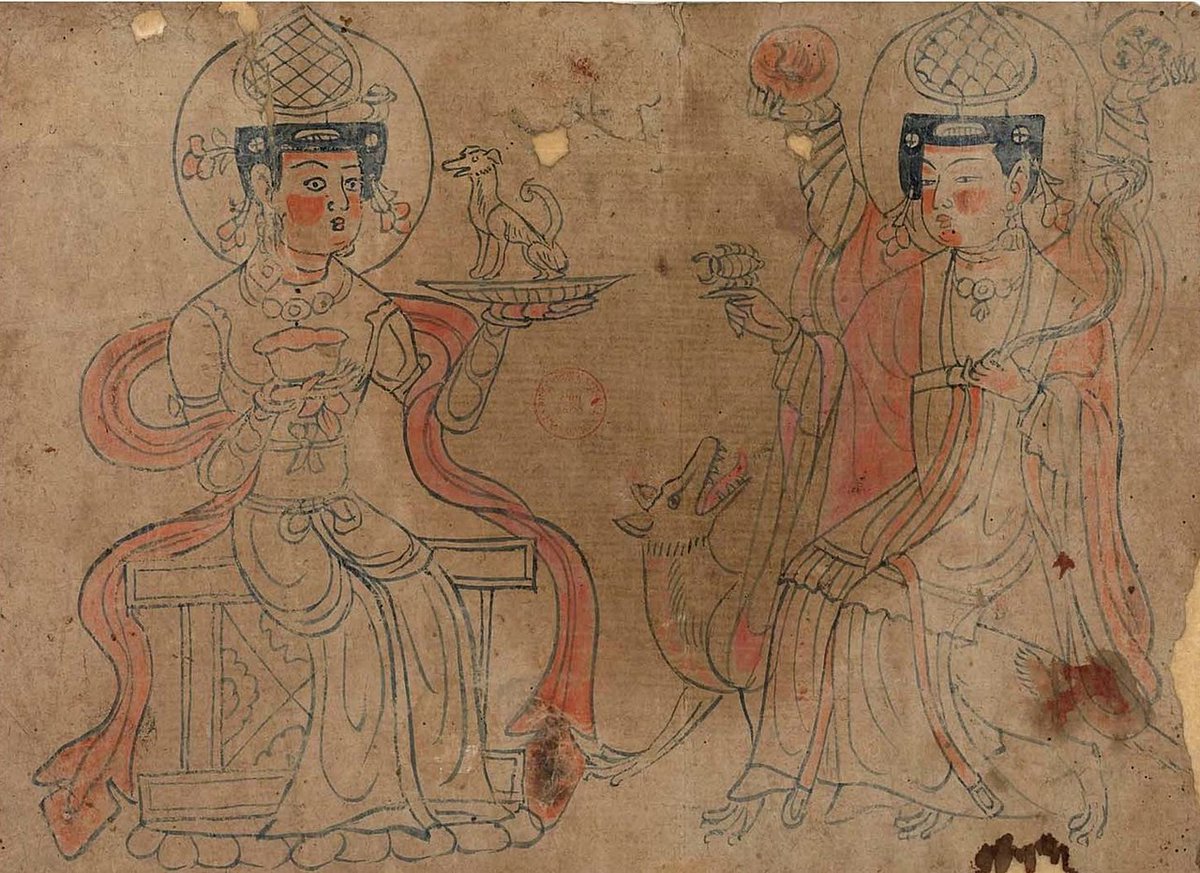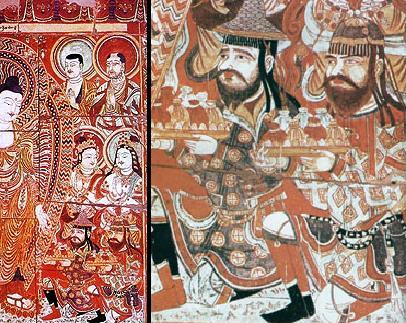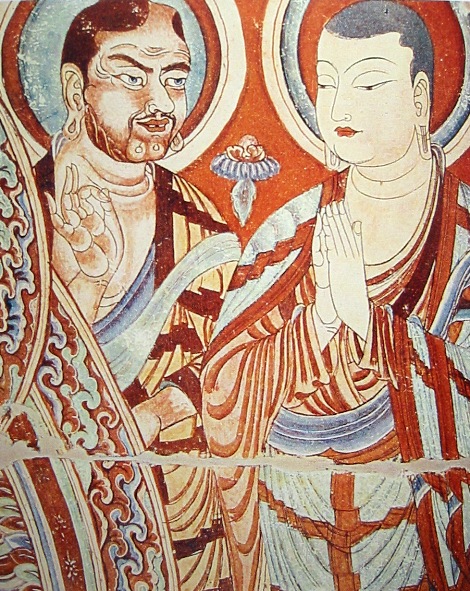
Tonight's theme, the final theme:
The Incredible Shrinking Khomeini
From absence to austere founder to...kindly grandfather?
1/SM
#Day7
#WrapItUpYo
#ConstantChanges

The Incredible Shrinking Khomeini
From absence to austere founder to...kindly grandfather?
1/SM
#Day7
#WrapItUpYo
#ConstantChanges


@Swarthy_Bastard We started out this week building on the work of @razaraz, applying the leverage of the historical method to give dimension to a country and revolution that, for the most part, remains flat in the analysis of "experts." For the scholar, tropes are opportunities.
2/SM

2/SM


@Swarthy_Bastard @razaraz Iranian-backed-Shiite-militias. The ayatollahs. The mullahs. The notorious Evin prison and that wall, that stupid wall. I can think of no other topic in which tropes pass for analysis and rigor, in which the shorthand for content is *the* content.
3/SM

3/SM
https://twitter.com/Swarthy_Bastard/status/1029758544415993856

@Swarthy_Bastard @razaraz When it comes to postrev ed, Khomeini takes center stage. In fact, he takes *all* the stage. The Leader we are told not only imposed his Islamic vision but designed the curriculum himself! An old Khomeini running around like the young Castro, micromanaging the revolution...
4/SM

4/SM


@Swarthy_Bastard @razaraz Which is wild since Khomeini is practically absent from the early primers (Grades 1-3), in word and in image. Khomeini appears first in word in 1981, sharing the stage with the revolutionary crowd in the First Grade lesson “The Islamic Revolution of Iran."
5/SM
5/SM

@Swarthy_Bastard @razaraz And as we've seen, he was *completely* MIA in terms of the front matter. Supreme Leader, but for most of the 1980s, never a Dear Leader.
6/SM


6/SM
https://twitter.com/HistorianofIran/status/1220006771512635393


@Swarthy_Bastard @razaraz Khomeini remains absent from the front matter of the 2nd Grade primer even longer than in the 1st. He debuts in '90 with a message familiar to all nasl-e sevom (3rd Gen) kids: "My hope is with you, the elementary student." This phrase & his image becomes standard issue.
7/SM
7/SM

@Swarthy_Bastard @razaraz For a brief time the illustrations veered towards the flinty and harsh, the portrayal of Khomeini most familiar to North Americans. Here was the imposing Leader, defiant, distant, unapproachable.
8/SM

8/SM
https://twitter.com/Sal_9K/status/1221628159084228608
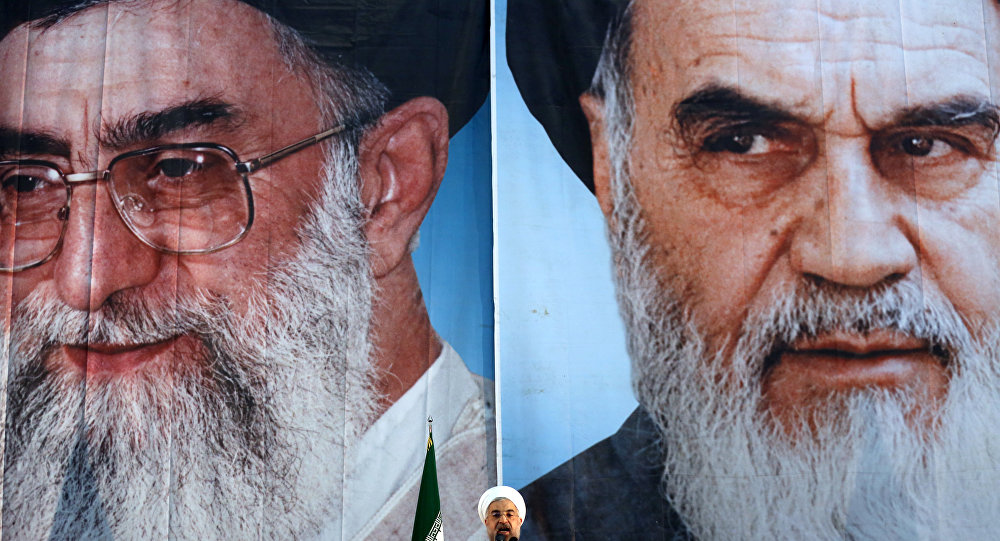
@Swarthy_Bastard @razaraz Representations of K mellow considerably by the late 1990s. Drawn in watercolor, shown reading a book out of which emerge flowers and butterflies, surrounded by grandkids, the transformation from revolutionary force to gentle leader is complete.
9/SM


9/SM



@Swarthy_Bastard @razaraz In the fullness of time Khomeini transforms into a historical figure that has to be recovered from oblivion. Fittingly, “A Memory of Revolution" replaces “The Islamic Revolution of Iran” in the 1st Grade primer.
10/SM
10/SM

@Swarthy_Bastard @razaraz A principal describes to his young students what it was like during the Revolution, how the people were waiting for their “Imam” to come back to Iran: "You were not yet born in those days. Our people under the leadership of Imam Khomeini had taken to the streets..."
11/SM
11/SM

@Swarthy_Bastard @razaraz "They shouted slogans: Allah Akbar, Khomeini rahbar (leader)! The people didn’t want the Shah. Before long the Shah escaped from Iran. Imam Khomeini came to the homeland..."
12/SM
12/SM

@Swarthy_Bastard @razaraz The story of Khomeini’s return is taught as a memory, and includes an image of uniformed children adorned with paper hearts bearing a picture of the late leader.
13/SM
13/SM

@Swarthy_Bastard @razaraz They are met with an approaching airplane showering daisies from its undercarriage over the countryside below, the timeless Persian obsession with flowers unchanged by revolution. Their eyes turn skyward to a plane that circles but never lands
14/SM
14/SM

@Swarthy_Bastard @razaraz ...promises from a future that never arrives.
15/SM
(Photos by @Swarthy_Bastard)



15/SM
(Photos by @Swarthy_Bastard)




@Swarthy_Bastard @razaraz 16/Fin fin
#HistoryOfIran
#WithDreamsOfOurFuture
#BaOmid
Signing off, @Swarthy_Bastard and Nilufar 🌸
Thank you ❤️🌹
#HistoryOfIran
#WithDreamsOfOurFuture
#BaOmid
Signing off, @Swarthy_Bastard and Nilufar 🌸
Thank you ❤️🌹

• • •
Missing some Tweet in this thread? You can try to
force a refresh




